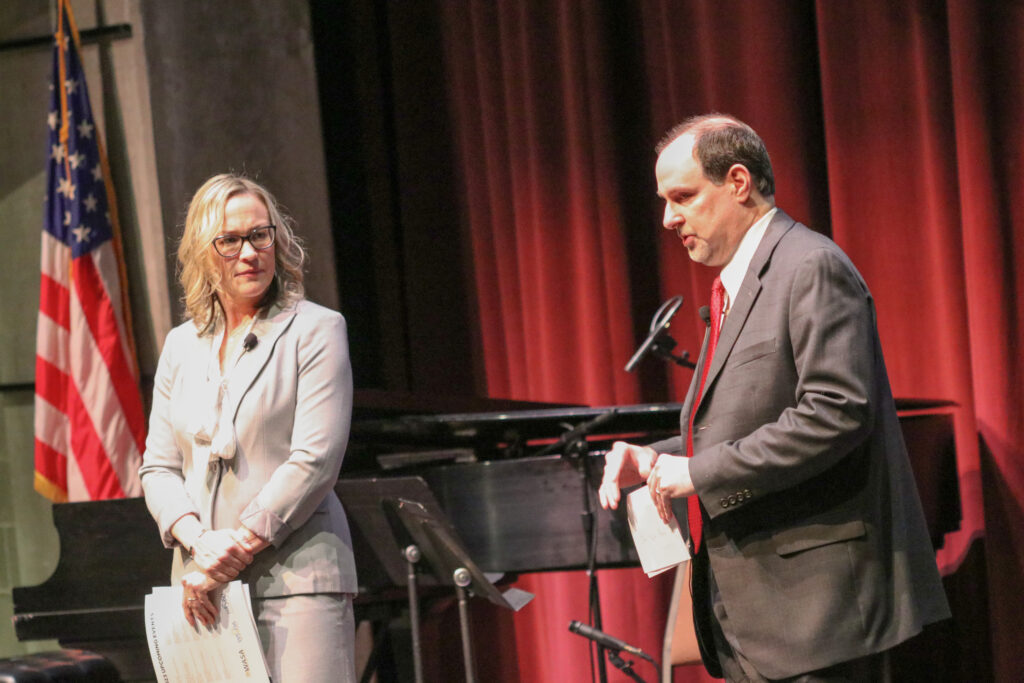School boards prioritize WSSDA’s legislative positions each fall following revision of WSSDA’s platform at General Assembly. The collective and statewide results of that process inform WSSDA’s board-adopted legislative priorities for the next session.
Although WSSDA’s legislative priorities for 2025 have yet to be adopted, some specific issues have consistently ranked high in priority. Those issues are special education, capital facilities and school construction, transportation, funding for basic education, staffing, and school meals.
Because these topics have remained important to our school boards over the last four to five years, it’s encouraging to see that some of our education partners have already started communicating similar priorities to legislators. Alignment between educational organizations tends to be influential in the eyes of our lawmakers.

Dan Steele and his colleagues at the Washington Association of School Administrators (WASA) have named their priorities the “Big Three.” We asked him how they came up with those priorities.
Marissa Rathbone: So, walk us through how WASA determined its legislative priorities for 2025.
Dan Steele: As soon as session ends, our Legislation & Finance Committee performs a debrief of the experience. As part of that meeting, we immediately turn and say, ‘let’s start talking about our platform for next year.’
This year we met the week after sine die. During the debrief, we agreed that we were not satisfied with our accomplishments and agreed that we need to do something different. And so, we started talking about the “Big Three:” Special Education, Transportation, and MSOC (Materials, Supplies and Operating Costs).
Our consensus was so strong that we radically accelerated our platform adoption process. We had another meeting a week later and our board adopted the new platform. Normally, our platform is adopted during summer.
Marissa: Given all the various issues impacting K-12, how did WASA settle on these three?
Dan: We wanted a platform that would enable our association to be aligned on issues that were not only important for us but could actually solve some financial problems. Second, we wanted to make sure that our association and the wider education community could be united.
With the Big Three, if we have any success at all, all 295 districts are going to be positively impacted. Urban, rural, east, west, well-resourced or under-resourced, it doesn’t matter. If we succeed on these three issues, all 295 districts will benefit.
The second reason for settling on the Big Three is that all of them are requirements of basic education. If the Legislature provides resources for these three required programs, it will free up funds for districts to use levies the way their communities want them to. Also, it would free up other resources that can actually be directed towards student success.
Marissa: Do you see any one of those three priorities as more probable for momentum than others?
Dan: Yes. Obviously, we want all three of them to cross the finish line. But I think special ed is probably the one that’s going to be talked about the most and has the best chance for success. The Legislature has heard from all of us so consistently that I think we may be able to push this over the top.
Marissa: I definitely agree with that, but the pushback we might get from the Legislature is that they just recently increased funding for that.
Dan: And we have thanked legislators for their efforts, but we consistently remind them that there are still gaps between what the state is providing and what the districts are actually expending. And that gap needs to close.
And if there are questions about how districts are spending money, there are three studies on the table, two of which, I think, will be complete before the 2025 session starts.
There are several special education components that will be debated during the session, including continued funding for inclusionary practices, the federal requirement to provide special education for kids up to age 22, and increasing the funding cap. WASA and our coalition, however, will focus our efforts on increasing the per-student multiplier* to ensure that the gap between state funding and district expenditures is reduced or eliminated.
Marissa: It may be obvious to some, but what’s the value of having other organizations in the education space join WASA in elevating these three priorities?
Dan: We need the numbers, and when we add up all the members of our various organizations together, we have them. But actually, we also want to expand outside of the education community. We want to support superintendents and board members and others who can actually meet with parents, meet with their community members, meet with their chambers of commerce, and other community organizations.
If we can have the education community united, and then we have people outside the system saying, ‘Yeah, yeah, that’s what we need to do,’ that will have power like we’ve never seen before. If school districts succeed in explaining this to their constituents, I think a lot of people will rally around our cause with the Big Three.
WSSDA Director of Strategic Advocacy Marissa Rathbone and WASA Assistant Executive Director of Government Relations Dan Steele discuss the advocacy landscape during session at the 2023 Legislative Conference.
For more information, see WASA’s Core Issues with School Funding website at www.waschoolfunding.org.
*Editor’s note: For more information on the multiplier, see page 25 of WSSDA’s Washington Public Schools Funding FAQ at wssda.org/funding.
About this Article
This article appeared in the Summer/Fall 2024 issue of WSSDA Direct. See more great stories and all the latest issues at wssda.org/Direct.